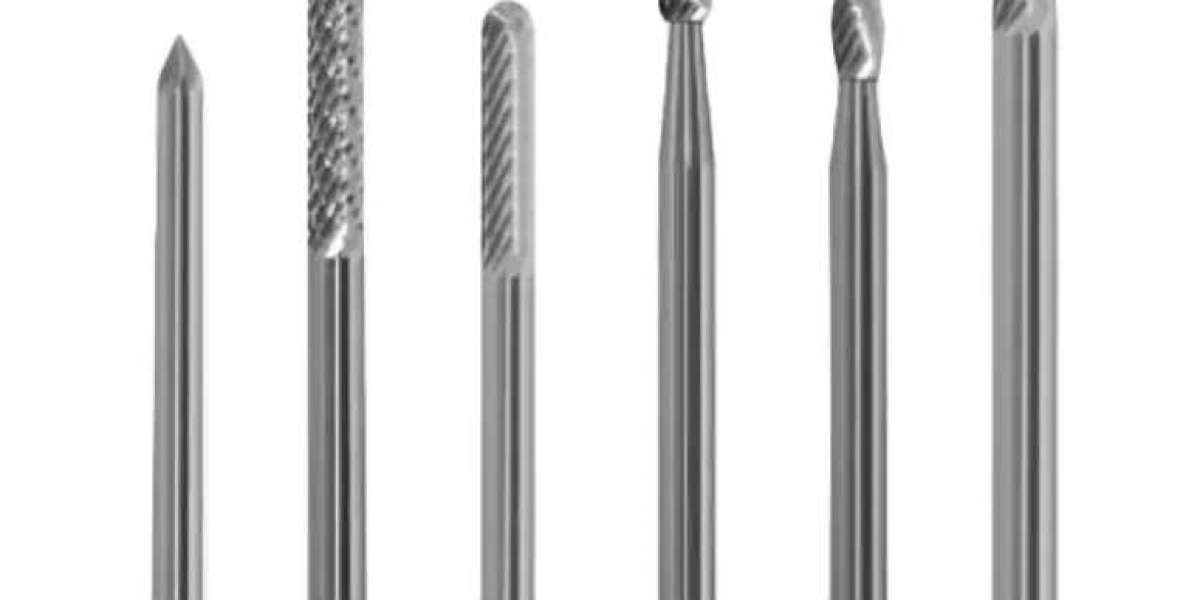Solid Carbide Burs have revolutionized many machining and finishing processes by offering substantial improvements in cutting efficiency compared to traditional burs made from materials like high-speed steel or standard tungsten carbide composites. The enhanced cutting efficiency is a result of the unique material properties and advanced manufacturing techniques used in Solid Carbide Burs, which enable faster material removal, higher precision, and longer tool life. These advantages have made Solid Carbide Burs a preferred choice in industries ranging from automotive and aerospace to dentistry and jewelry making.
One of the primary reasons Solid Carbide Burs achieve superior cutting efficiency is their exceptional hardness and wear resistance. Made from tungsten carbide with a cobalt binder, these burs maintain their sharp cutting edges significantly longer than traditional burs. This allows for consistent high-performance cutting without the frequent need for tool changes or re-sharpening, which typically slows down production when using conventional tools. The sustained sharpness means operators can work at higher feed rates and spindle speeds without sacrificing surface quality, resulting in faster overall machining cycles.
In addition to hardness, the thermal stability of Solid Carbide Burs contributes greatly to their cutting efficiency. During high-speed cutting, heat generation is inevitable, and many traditional burs suffer from softening or edge degradation due to thermal stress. Solid Carbide Burs, however, can withstand elevated temperatures without losing their cutting properties. This stability allows machines to run at faster speeds and higher intensities, pushing productivity beyond what conventional burs can handle while maintaining precise and clean cuts.
The geometry and surface finish of Solid Carbide Burs are also optimized through advanced manufacturing processes. These burs feature precisely engineered cutting edges and smooth surfaces that reduce friction and improve chip evacuation. Efficient chip removal minimizes clogging and heat buildup, allowing the cutting action to remain smooth and continuous. In contrast, traditional burs with less refined geometries often face increased resistance and inconsistent cutting performance. This design advantage translates into quicker material removal rates and less downtime.
Moreover, the rigidity of Solid Carbide Burs helps reduce vibrations during cutting, enhancing both the tool’s life and the quality of the finished surface. Reduced vibration not only improves cutting speed but also decreases the risk of tool breakage and the need for secondary finishing operations. This further accelerates the entire production process when compared to traditional burs, which may flex or chatter under the same conditions.
While Solid Carbide Burs may come at a higher initial cost, their cutting efficiency gains typically result in lower overall manufacturing costs. The reduced tool change frequency, faster machining times, and improved finish quality all contribute to a more economical production process. Many users report cutting cycle times cut by as much as 20% to 50% when switching from traditional burs to Solid Carbide Burs, a significant improvement that underscores their value.
In summary, Solid Carbide Burs offer a remarkable enhancement in cutting efficiency over traditional burs due to their superior hardness, thermal resistance, optimized geometry, and rigidity. These factors enable faster cutting speeds, longer tool life, and better surface finishes, making Solid Carbide Burs an excellent investment for industries demanding high productivity and precision. Their ability to maintain peak performance under challenging conditions sets them apart from conventional tools and drives substantial gains in manufacturing efficiency.








